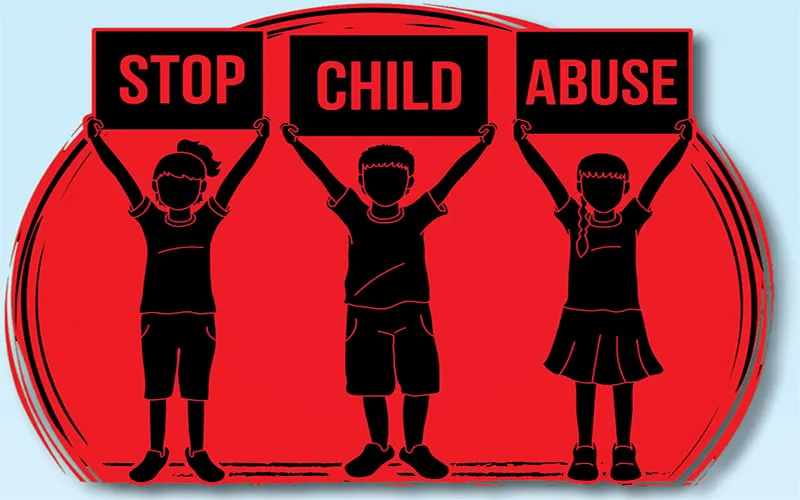We all are aware of the fact that with the abrogation of article 370 and the transition of J&K from State to Union Territory, the central Protection of Children from Sexual Offences Act, POCSO Act, 2012 was also extended to the Union Territory of J&K, which is a comprehensive law to provide for the protection of children from the offences of sexual assault, sexual harassment and pornography, while safeguarding the interests of the child at every stage of the judicial process by incorporating child-friendly mechanisms for reporting, recording of evidence, investigation and speedy trial of offences through designated Special Courts. But the extension of the POCSO Act in J&K will not make any difference until it is implemented in letter and spirit.
That is why the policy framing process of schools must follow the prevention, preparedness, response, and recovery (PPRR) model of risk management. Schools must recognize the power of vigilance as the key to protecting children. But we always ruminate as a layman and a stakeholder, as a teacher and as a parent, as a friend and as a member of society, what can we do?
So we have a simple but an important role to play in such situations. Always Put Child First (Give priority over all other important work), Do Not Ignore the Situation.Take Following Steps to Help Child in Need:
Step-1
• Immediately contact parents if child is not abused by parents and if child can give information of his/her parents
Step-2
• Contact any one of the following agencies: DCPU (District Child Protection Unit), SJPU (Special Juvenile Police Unit), and Child line 1098, Child Protection Committee CPCs, Police or CWC. You can also take help from credible NGOs working on Child Rights in your area
Step-3
• Provide Emergency Support, such as medical aid, clothing, food and transportation to safe places. Make sure that you handover this child to responsible adults from the above mentioned list only.
Step-4
• Help authorities with whatever information and evidence you have with regard to abuse of the child to make sure that the abuser is punished. If possible give written information. When you are in position of authority where child protection is at stake, it is your Primary Responsibility to provide support needed and to report authorities.
• In fact under Sec 21 Protection of Children from Sexual Offence Act (POCSO), if you do not report sexual abuse of the child (which is known to you) then you can also be booked under the law. (POCSO says in case of sexual offense it is mandatory to report)You need not be complainant in the case if you do not want to. Do not hesitate to support because of the fear of time requirement for the legal procedures.
Step-5
• Maintain privacy to ensure that the name of the child is not disclosed to the media or public in any way.
But before we respond and recover we have to prevent and prepare. So we can, create safe places for children in communities, neighbourhoods and societies, create structures and systems where children can express their feelings and emotions freely without any inhibitions, create structures and systems to ensure safety and to ensure that children are supervised, educate children about safety measures. Provide information about the emergency contact numbers. Create awareness about child protection systems and networks. Keep information handy, build a network of concern individuals and groups to help children. Develop support systems for children, build public opinion for child protection so that child protection will get priority in planning and budgeting.
We need to keep in mind that child abuse and neglect occur in all types of families, no matter the income, education, family size, race, religion, or any other trait. While there is no way to know the exact risk a child faces, there are some factors to strengthen families and protect children like nurturing and attachment (give affection and nurturing, the needs of the child, how they learned to parent, consistent positive bonds), Child’s social and emotional skills (learn how to relate to others in their lives, to learn about emotions) Parental Resilience (change their attitudes and behaviours, emotional resilience is a combination of flexibility and strength), knowledge of parenting and child development (parenting skills, how children grow and change, about their own child’s unique needs and abilities), social connections (building webs of trust, family stronger and more resilient) and support systems for times of need (adequate care, basic needs met in terms of food, clothing, housing, and access to other essentials)
We must realise that vehemence and violence can affect a child for the rest of their life, with severe consequences for a child’s physical, psychological and mental health. Children who have experienced violence are also more likely to perpetuate the circle of viciousness, passing on patterns of ferocity and circlet of savagery to their peers or to future generations. Therefore, ending violence against children is not only important for each child’s rights, but also for healthy and positive communities and societies.
As the old adage goes, “It takes a village to raise a child.” So we all, as a positive community, are liable and accountable in our own capacities and capabilities, to bring safety to school and homes, and protect our child. Protecting children is to protect the community. At SCERT JK (K) we have started doing our bit as we are determined to edify, orient and aware educational stakeholders for the protection of children through a series of workshops and orientation programmes; are you?
Dr Rabia Naseem Mughal is an Academic Officer at SCERT JK (Kashmir)
Disclaimer: The views and opinions expressed in this article are the personal opinions of the author. The facts, analysis, assumptions and perspective appearing in the article do not reflect the views of GK






